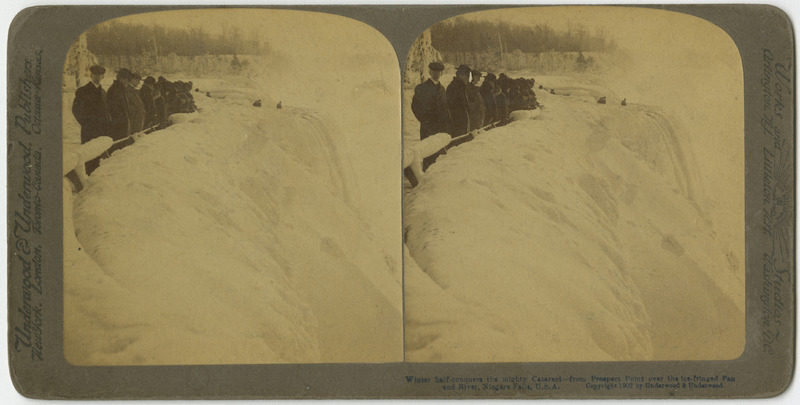Stereograph Publishers
As the popularity of stereographs grew companies used a variety a ways to sell them, including traveling sales agents, drug, novelty, and book stores, and even promotions and church events. To reach a more academic audience, the companies started publishing some sets with captions on the back of them to educate the viewer on the scene that they are viewing.
There were three main stereograph publishers, Underwood & Underwood, Keystone Viewing Company, and H.C. White Company. In this collection you will see examples of several of these different publishers.
Underwood & Underwood
Founded in 1882 in Kansas, U&U at first only sold stereographs by other companies but stared to send photographers around the world not soon after. They packaged these in boxed sets that simulated a tour of a country. By 1901 they became the leading stereograph firm, producing about 300,00 stereographs a year. In a 1900's catalogue explaining their stereographs they state:
"It provides travel not for the body, but for the mind, but travel that is none the less real on that account. Il makes it possible for one to feel oneself present and to know accurately famous scenes and places thousands of miles away, without moving his body from the armchair in his comfortable corner."
Keystone Viewing Company
Started from one amateur photographer in 1892, B.L. Singley built one of the leading stereograph firms of the era before their competitor, Underwood & Underwood in the 1930’s, bought them out. Keystone pursued the educational market preparing written texts for teachers that would accompany their stereographs and even creating a Stereoscopic Encyclopedia that held "literary subjects and settings for peoples of all lands."
H.C. White Company
Though smaller than its competitors, this company started in 1899 and ultimately produced some 12,800 titles from its photographers that traveled more that 140,000 miles around the world.
- Vanderknyff, Rick. 2007. "Parlor Illusions: Stereoscopic Views of Sub-Saharan Africa." African Arts 40, no. 3: 50-63. OmniFile Full Text Mega (H.W. Wilson), EBSCOhost (accessed April 30, 2015).
- Lisa Spiro, Major US Stereograph Publishers. OpenStax CNX. October 30, 2006 http://cnx.org/contents/aa7f5fcc-a553-44b7-9be1-1dc5fda3ea55@3.
Below is an example of an Underwood & Underwood stereograph with accompanying caption on the backside.
We are on the American side of the river, looking S.W. up the river and across to Canada.
This snow-coated bluff on which we are standing goes almost straight down 160 feet before it reaches the river-level. The river waters have come down through the rapids just above, at our left; now Goat Island, that high tree-crowned cliff over the heads of these sight-seers, divides the flood into two parts, just as it makes ready to leap into the gulf far below. These are the American Falls on this side of Goat Island; over there at the right, where the clouds of spray rise and float like smoke before our eyes, are the Horse-Shoe Falls, pouring over the enormous, curing precipice that reaches across to Canada. The trees in the distance there at the right, dimmed by the must and spray, are on the Canadian shore, three quarters of a mile away. Between those and the point where we are standing the enormous outlet of the Great Lakes comes steadily sweeping on and on and on, to fall into this gigantic chasm and send up these millions of spray sparkles into the winter air. The depth of the heaving waters, away down below the falls, is said to be some 180 feet; the bed of the river is not less than 350 feet below these snow banks. The ceaseless sweep of the Horse-shoe; that great curve is moving back up the river toward Lake Erie at an average rate of 2 4/10th feet in a year. Within the memory of men now living the falls have receded almost 200 feet. The vast processes of the world’s creation are still going on before our eyes. And yet, with all its awful grandeur, the chief impression of Niagara is that of vast serenity.
See Niagara through the Stereoscope, published by Underwood & Underwood, with special “keyed” maps showing the exact location of a series of admirable standpoints and identifying all the landmarks
